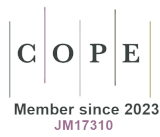Małgośka i Damą być, czyli o przekładzie na język niemiecki wybranych tekstów Agnieszki Osieckiej
DOI:
https://doi.org/10.18778/1427-9665.17.04Słowa kluczowe:
literary translation, song, translation strategies, Agnieszka OsieckaAbstrakt
The article discusses translation strategies for the lyrics of Agnieszka Osiecka’s songs, highlighting the challenges associated with transferring verbal-musical content into another language. The article emphasizes that literal translations may not always preserve the original function of the song, and the key decision for the translator becomes the choice between a formal and dynamic approach. The author points out two levels of impact that songs have on the listener: a sensory level, related to sound and melody, and a cognitive level, associated with understanding and interpreting the lyrics. Hence, successful translation of songs requires consideration of both these aspects.
Bibliografia
Brzozowski J. (2011), Stanąć po stronie tłumacza. Zarys poetyki opisowej przekładu. Kraków: Wydawnictwo Uniwersytetu Jagiellońskiego.
Google Scholar
Tomaszkiewicz T. (2006), Terminologia tłumaczenia. Poznań: Wydawnictwo Naukowe UAM.
Google Scholar
Ziomek J. (1965), Staff i Kochanowski: próba zastosowania teorii informacji w badaniach nad przekładem. Poznań: Wydawnictwo Uniwersytetu im. Adama Mickiewicza w Poznaniu.
Google Scholar
https://lyricstranslate.com/pl/Maryla-Rodowicz-Marja-lyrics.html
Google Scholar
https://www.duden.de/rechtschreibung/Mostrich
Google Scholar
https://www.duden.de/rechtschreibung/Senfglas
Google Scholar
https://www.tekstowo.pl/piosenka,maryla_rodowicz,dama_byc.html
Google Scholar
https://www.tekstowo.pl/piosenka,maryla_rodowicz,malgoska.html
Google Scholar
https://www.tekstowo.pl/piosenka,maryla_rodowicz,_ne_dame_sein.html
Google Scholar
Opublikowane
Wersje
- 2023-12-31 - (2)
- 2023-12-31 - (1)
Jak cytować
Numer
Dział
Licencja

Utwór dostępny jest na licencji Creative Commons Uznanie autorstwa – Użycie niekomercyjne – Bez utworów zależnych 4.0 Międzynarodowe.










